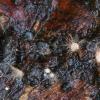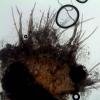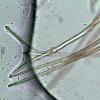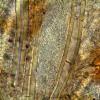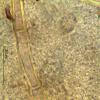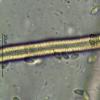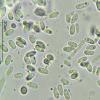
07-02-2015 18:39
 Rubén Martínez-Gil
Rubén Martínez-Gil
Hola a todos. Subo unas fotos de lo que hemos enc

04-02-2015 22:01
Carmel SammutHi, I have a few collections of a black Peziza

07-02-2015 19:01
 Jenny Seawright
Jenny Seawright
Hello all, These were found on rabbit dung (Orycto

08-02-2015 13:33
Salvador TelloHola a todos. Estoy buscando el siguiente documen

06-02-2015 16:35
 Jenny Seawright
Jenny Seawright
Hello all, I'm new to the forum and to identifying

06-02-2015 19:24
 Blasco Rafael
Blasco Rafael
Hola, tengo esta muestra recogida sobre ramas caid

03-02-2015 18:07
 Godorova Olga
Godorova Olga
Large and beautiful Peziza sp. Was found quite in

01-07-2013 16:45
This Scutellinia was found in a tractor rut.3.3mm
Anamorfo? con pelos
Rubén Martínez-Gil,
07-02-2015 18:39

Hola a todos.
Subo unas fotos de lo que hemos encontrado sobre conos de Cupressus.
¿Me pueden ayudar?
Gracias por su ayuda.
Rubén
Walter Gams,
07-02-2015 19:52
Re : Anamorfo? con pelos
The setae seem hyaline. Thus probably just Volutella ciliata.
Saludos Walter
Saludos Walter
Rubén Martínez-Gil,
08-02-2015 20:44

Re : Anamorfo? con pelos
Muchas gracias por su ayuda, Walter.
Un saludo
Rubén
